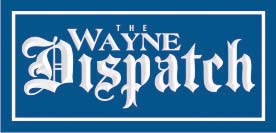Plante Moran explains budgeting for a city
By Carolyn Marnon – When you budget for yourself and/or your family, you keep track of what money comes in, what money goes out, and you generally have a plan for the year.
When a municipality budgets, the budget is a prediction of what that local government is going to do, and it requires approval by the city council to authorize the spending.
This is how Brian Camiller of Plante Moran explained how local government budgeting compares with personal budgeting when he spoke with the Wayne City Council during the January 26 special study session budget meeting via Zoom.
The responsibility of putting together a budget should include all stakeholders of the municipality. This includes department heads, the finance department, the city council and the general public. The budget is an authorization for spending.
There are three steps in the budget process. The first step involves preparation. This is where the department heads do their data gathering and submit their findings so that an initial draft of a budget document can be prepared. The responsibility of creating the budget document is on the top-ranking municipality person, in Wayne that would be City Manager Lisa Nocerini. According to Camiller, Nocerini has delegated the task to Plante Moran and the City’s Finance Director, Kathryn Sample.
The second step involves adopting the budget. The general public can provide input on the draft budget before the City Council votes to approve it.
The third, and final, step is executing and monitoring the budget. During the entire fiscal year, execution involves the running of the City. Employees show up at work; that’s an expense. Services are purchased; that’s an expense. The City spending has to be monitored for what is happening and modifying the budget as needed.
When it looks like something is going to go over budget, amendments must be brought to the council for approval. Camiller said these amendments need to be brought to council before spending goes over budget, not after. The budget is a fluid document that ebbs and flows up until the end of the fiscal year. Life changes, he said, and we have to roll with it.
Public Act 2 gives detailed instructions on what must be included in the budget. This includes the last audited financial amounts, the current version of the amended budget, and current year to date activity. In essence, you are looking at the last completed fiscal year and the current fiscal year while looking ahead to the next fiscal year.
There must be a reconciliation of fund balance. “You have to pass a budget, by law, that results in positive fund balance come the end of the budget year,” Camiller informed the council. “A balanced budget, according to Public Act 2, is the existing fund balance at the beginning of the year plus revenue is equal to or greater than expenses. So it’s okay to spend fund balance, sometimes. You can’t do it every year.” A balanced budget means you are going to end the year with a fund balance. It does not mean revenues must equal expenses.
Camiller concluded his presentation letting council know that the more financial information they have, the better decisions they will make.
Finance Director Sample went over a budget document with councilmembers while detailing key information on how to read a budget report.
City Manager Nocerini stressed that the City still needs to find a viable revenue source. She encourages city councilmembers to continue to brainstorm ideas.
Ideas generated during the special session included working with neighboring communities to establish a fire or police authority, annexing property from an adjoining city that the neighboring city has a harder time patrolling, paying off bonds, reorganizing city government, having 501c3s (like religious institutions in the city) contribute a stipend for the city services they receive, long-term investments like solar energy, and moving the court to the police department.
The City is at the point where nickel and dime revenue sources aren’t sufficient.
Any citizen can go to the City of Wayne’s website and view the latest amended budget under the Financial Dashboard.




